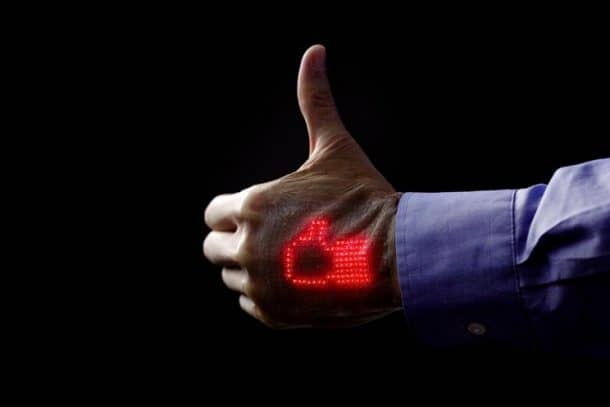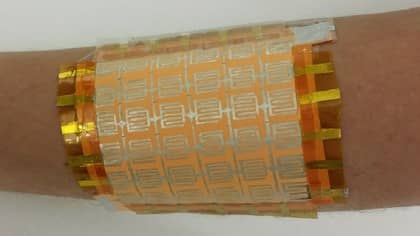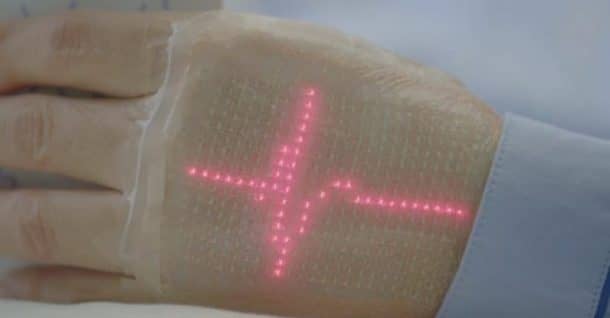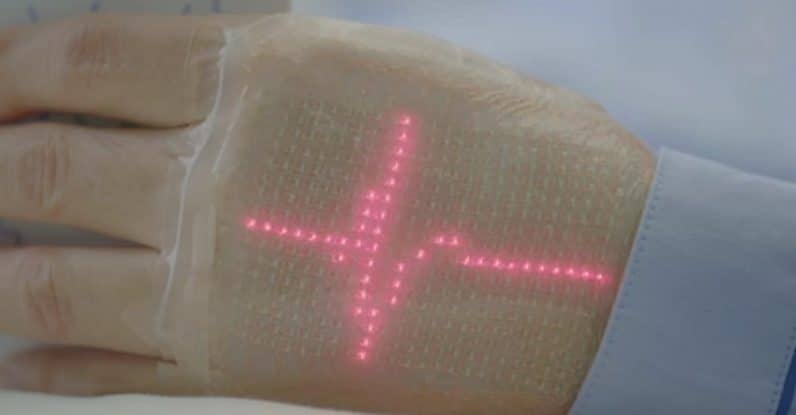When we hear the word synthetic skin, our mind conjures an image of a skin that does not look human and does not go with the rest of the body. However, that is not the case. The synthetic skin could provide a great number of benefits in detecting health issues in the future.
A team from the University of Tokyo developed a thin elastic display that has the capability of monitoring your heart rate and then displaying it on your smartphone or directly on your skin. Professor Takao Someya led the research team from the University of Tokyo’s Graduate School of Engineering who noted that the electronic skin is incredibly unique. “Our skin display exhibits simple graphics with motion,” Someya said. “Because it is made from thin and soft materials, it can be deformed freely.”

The display snugly fits on the skin and the results are not pixelated even when the skin is stretched. The synthetic skin is very durable and you can wear it continuously for a week before any inflammation occurs. Each display has a set up of 16 x 24 micro LEDs and stretchable wiring that’s mounted onto a rubber sheet.

The synthetic skin takes into account an electric system that is safe to use even for the elderly. It is perfect for those people who have trouble reading the complicated interfaces of many gadgets and for those who need constant monitoring.
“The current ageing society requires user-friendly wearable sensors for monitoring patient vitals in order to reduce the burden on patients and family members providing nursing care,” Someya noted. “Our system could serve as one of the long-awaited solutions to fulfil this need, which will ultimately lead to improving the quality of life for many.”

The synthetic skin display itself was a partnership between the University of Tokyo’s engineers and the Dai Nippon Printing (DNP) group, an innovative Japanese printing company. DNP stated in a press conference that they will be trying their best to bring the skin to market within the next three years.
That is not a lot of time to wait and when it does make its way to the market, it will definitely help a lot of people.


